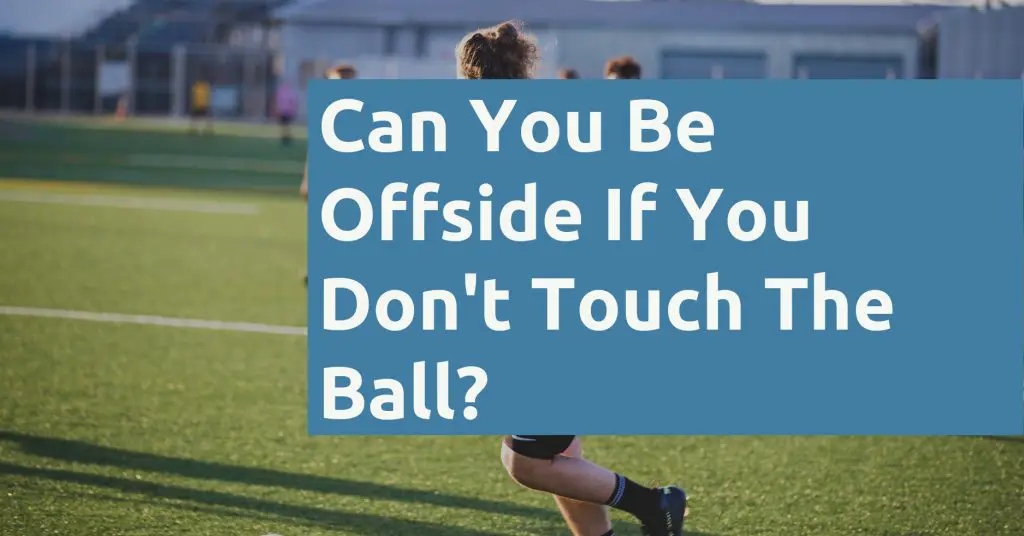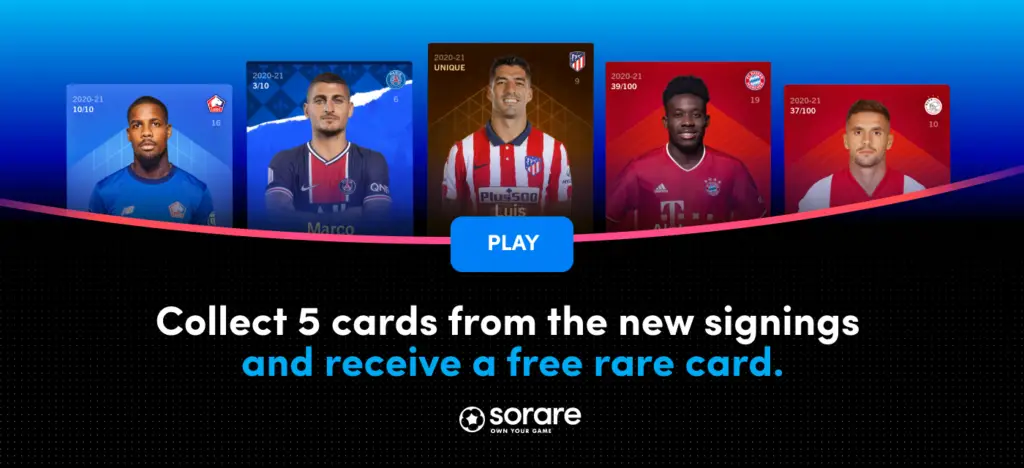Last updated on January 16th, 2023
There may be times when you’re in an offside position, but you did not touch the ball.
However, the referee may still make an offside call!
So how does the offside rule apply when you are not touching the ball?
Contents
Can you be offside if you don’t touch the ball?
It is possible for you to be called offside even if you did not touch the ball. If you were deemed by the referee to have interfered with an opponent, you will commit an offside offence if you were in an offside position.
Here is this rule explained further in detail:
You have to be in an offside position first
To be even considered as offside, you’ll have to be in an offside position first. The IFAB defines the offside position to be one where you are ahead of both the ball and the second-last opponent.
Here are some things you may want to take note regarding this:
- The last 2 opponents need not include the goalkeeper
- If you are past the second-last opponent but are behind the ball, you are still onside
Once you are in an offside position, you can be called offside by the referee. However, this depends on whether you make an offside offence or not!
One reason why there was this change to the rule was because the IFAB wanted to promote attacking football.
There are 3 ways you can commit an offside offence
The Offside law states that ‘a player in an offside position … is only penalised on becoming involved in active play …’.
The law then states 3 ways that you can become involved in active play:
#1 Interfering with play
When you interfere with play, this means that you’ve touched the ball that was passed by your teammate.
As such, you will need to touch the ball in this scenario to be called offside.
#2 Gaining an advantage by playing the ball
For this scenario, you will have to be in an offside position before these 2 scenarios:
- The ball is rebounded or deflected off the goalpost, crossbar or an opponent
- The ball has been deliberately saved by any opponent
You are considered to have gained an advantage if:
- You were in an offside position when your teammate played the ball
- You attempted to play the ball
As such, you will be deemed as offside.
In this scenario, you will also need to touch the ball before you are called offside.
#3 Interfering with an opponent
However, there is this last scenario where you can be offside by interfering with your opponent. Here are some scenarios that are outlined in the Laws of the Game:
- Preventing an opponent from playing or being able to play the ball by clearly obstructing the opponent’s line of vision
- Challenging an opponent for the ball
- Clearly attempting to play a ball which is close when this action impacts on an opponent
- Making an obvious action which clearly impacts on the ability of an opponent to play the ball
None of these scenarios state that anything about touching the ball. As such, it is possible to commit an offside offence even if you do not touch the ball!
If you were just in an offside position without interfering with play or touching the ball, you would not have committed an offside offence.

You can interfere with an opponent after the ball has rebounded
In the previous scenario, you would have been offside if you touched the ball after it has rebounded or was saved.
In this same situation, you can still be called offside even if you did not touch the ball!
This is done when you interfere with the opponent after the rebound or save occurred . The law still deems that you have gained an advantage.
So long as you are in an offside position and are deemed to have interfered with play, you will be called offside!
Examples
Here are some scenarios where players who didn’t touch the ball but were ruled offside.
#1 Valverde’s shot was ruled offside (Real Madrid vs Shakhtar)
In the 2020/21 Champions League season, Real Madrid had a last-minute equaliser ruled as offside. Federico Valverde thought he had scored the equaliser.
However, Vinicius Junior was deemed to have obstructed the goalkeeper’s line of vision. This was why the goalkeeper was seen standing still as he did not have enough time to react to the shot.
There is another part of the offside rule that states:
a player moving from, or standing in, an offside position is in the way of an opponent and interferes with the movement of the opponent towards the ball this is an offside offence if it impacts on the ability of the opponent to play or challenge for the ball
Vinicius was standing directly in front of the goalkeeper. The referee decided that he was interfering with play, since he impacted the ability of the goalkeeper to claim the ball.
As such, the goal did not stand!
#2 Bradley Wright-Phillips’ shot was ruled offside (Atalanta United vs NYRB)
In this match between Atalanta United and New York Red Bulls in the 2018 MLS Cup, Bradley Wright-Phillips attempted this shot which was initially awarded as a goal.
However, after the referee took a closer look, he disallowed the goal because of an offside.
This was because BWP’s teammate was deemed to have blocked Brad Guzan’s line of sight. Even though he did not touch the ball, he still committed an offside offence!
#3 Hakim Ziyech vs Belgium (World Cup 2022)
In this group-stage match between Belgium and Morocco, Hakim Ziyech scored a great goal which was eventually disallowed.
This was because one of the defenders, Romain Saïss, was in an offside position when Ziyech shot the ball.
Even though Saïss did not touch the ball, he still attempted to head the ball into the net.
As such, he was deemed as interfering with the goalkeeper, this goal was eventually ruled offside.
#4 Bruno Fernandes vs Man City (Premier League 2022/23)
This was an extremely controversial call as Marcus Rashford was seen to have interfered with the ball while he was in an offside position.
Casemiro first passed the ball to Rashford, but he did not touch the ball and it rolled to Fernandes to score the goal.
It could be argued that Rashford was “Making an obvious action which clearly impacts on the ability of an opponent to play the ball”, as he was seen to have shielded the ball, and prevented a Manchester City defender from reaching the ball.
However, the referee still decided to award to goal to Manchester United, which has been a rather controversial decision.
You can find out what resulted in 2 different Manchester clubs here.
This rule is open to interpretation by the referee
However, this rule is really subject to the referee’s decision. The referee will be the one to determine if the player is really interfering with the opponent.
This can be really subjective, and different referees may have different opinions!
Now with VAR being available in football, it may make things much easier for the referee. In the past, they would have to make a decision at that point in time.
Now, they are able to take a look at the replays to decide if the player was interfering with the opponent or not!
Conclusion
You can commit an offside offence when you are in an offside position and you interfere with the opponent.
The definition of interfering with an opponent did not mention that you need to touch the ball.
As such, it is possible to commit an offside offence even when you do not touch the ball!
You can find out more about why we need the offside rule here.
If you’re looking to buy the latest football merchandise from your favourite club, you can check out the latest deals at Kitbag.
Subscribe to Telegram and Twitter to get the latest updates!

Are you passionate about football and want to earn some side income?


